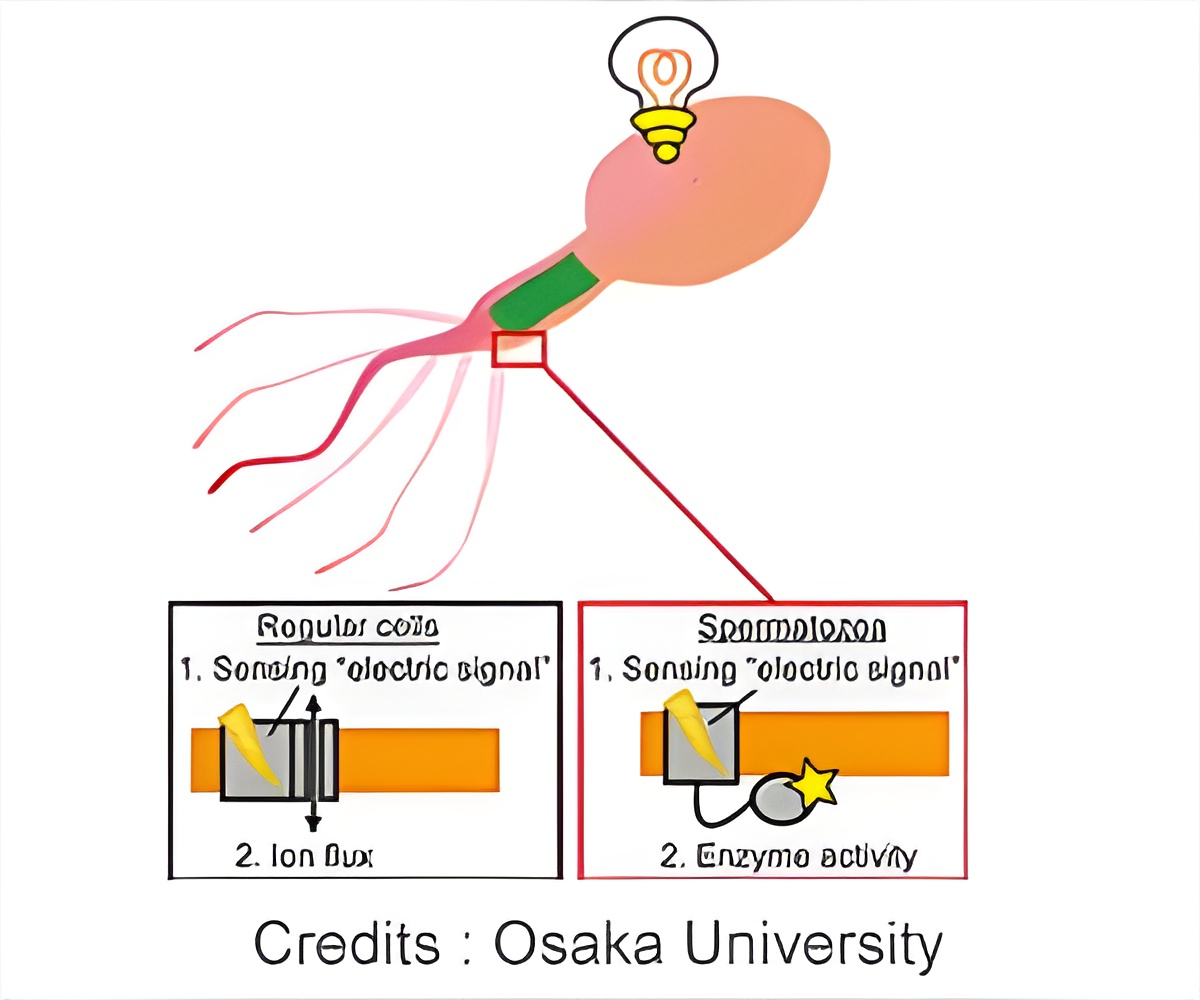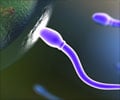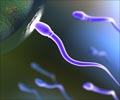
‘Protein defect was found to leave sperm chasing their tails.’
Tweet it Now
While researchers have known for some time that an electrical signal-sensing protein called VSP is expressed in sperm of many animal species, the actual physiological role of this protein was unknown. Lead author of the study Takafumi Kawai explains, "Determining the physiological role of VSP was the main aim of our study. To do this, we generated a VSP-deficient mouse line so that we could examine VSP-deficient sperm from these animals."
The first thing the researchers noticed was that the VSP-deficient sperm had a greatly reduced ability to fertilize eggs in vitro. Closer inspection showed that the sperm were swimming around in circles during capacitation, meaning that fewer sperm actually made it to their destination. Defective motility suggested a problem with the flagellum, prompting the researchers to examine these structures in more detail.
"Surprisingly, in normal sperm, a lipid molecule called PIP2 is concentrated near the top of the flagellum, closer to the head," says Dr Kawai. "In the VSP-deficient sperm, PIP2 was both more abundant and more widely dispersed throughout the flagellum. We also recorded much higher concentrations of calcium ions in the VSP-deficient sperm."
These findings suggested that VSP plays a major role in ion channel regulation, which ultimately affects motility. The researchers proposed a mechanism whereby VSP is responsible for the polarized distribution of PIP2 in the flagellum. PIP2 then activates potassium ion channels, which indirectly causes a localized influx of calcium ions, enhancing motility. In the VSP-deficient sperm, the dispersed PIP2 causes excessive calcium ion influx which decreases the flexibility of the flagellum, affecting motility.
Advertisement
Source-Eurekalert















